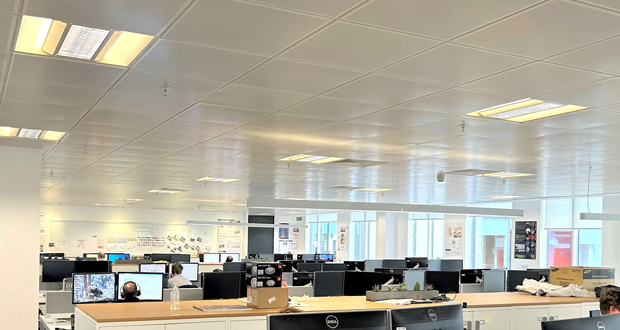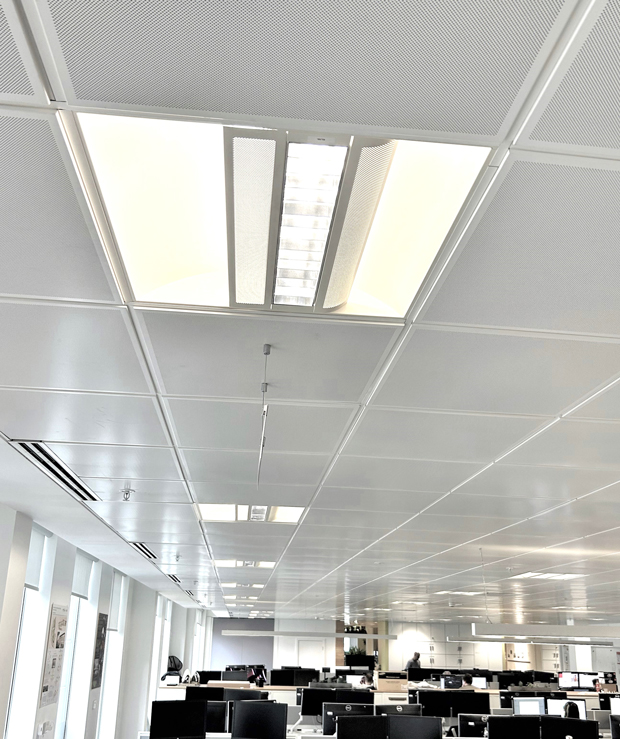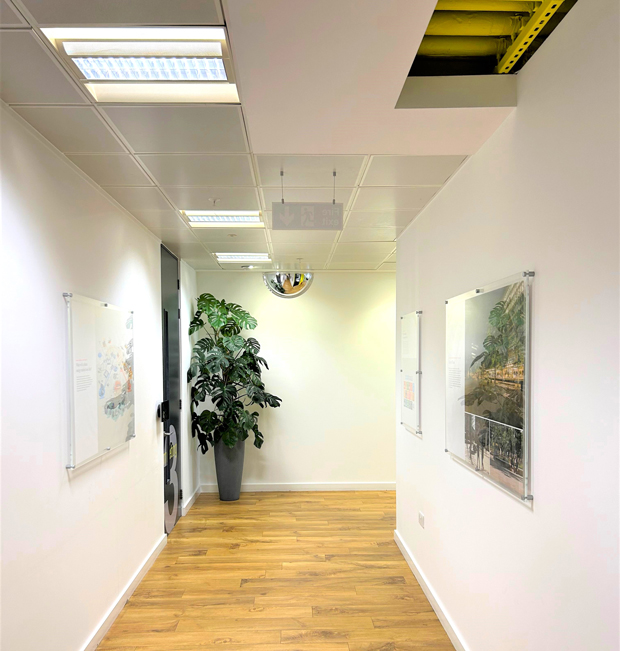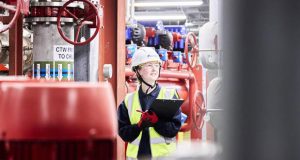When we look to the future of lighting it’s clear to see that, quite simply, we need to do more. Across the globe, embracing a circular economy and capturing the associated carbon benefits that are derived may be daunting for the majority of people.
So how do we address the single biggest climate and environment challenge we have ever known? At The Regen Initiative, we are working to be in a position where waste no longer exists. We can create and maintain healthy environments, with excellent quality products which have little or no impact on the environment.
Sustainable lighting is not just about reducing waste, it’s about ensuring that turn-key solutions become the only solution for the future. With our remanufacturing process of making new products from pre-used products, we have the opportunity to make positive changes in the lighting industry. We keep the original luminaire material and convert the light source to LED, which is the perfect lighting solution that not only helps the environment but also saves you time and money – now that’s re-engineering at its best. The aim of The Regen Initiative partners is to work together to provide more efficient lighting that stands the test of time without compromise. Together we are challenging the status quo and striving to provide solutions without sacrificing quality or compromising on safety or ethical standards.
To ensure equal standards, the Chartered Institution of Building Services Engineers (CIBSE) has recently launched two technical memorandums, TM65 and TM66. These memorandums have been specifically designed to help specifiers and manufacturers understand the metrics upon which sustainability credentials are based.
As is often the case, memorandums can be adjusted; in the case of TM65 a lighting specification variation has been drafted and submitted for technical review. As for TM66, a working group has been formed to address feedback before taking the memorandum to full release.
Memorandums and legislations can be full of confusing technical data, making the details hard to digest. So we’ve laid out the facts:
TM65 is a method for calculating embodied carbon in building services. Embodied carbon is the greenhouse gas emission associated with the making of a product. The TM65 contains a ‘Basic’ calculation for carbon emissions -this is where a fitting is dismantled, the materials are identified, weighed and quantified as a percentage of the total luminaire weight. All weights and materials are then multiplied by a material co-efficient (defined within the TM65 memorandum).
The TM65 also has a ‘Mid-level’ calculation. This level of analysis requires the company to have self-assessed or had a third-party assessment of the logistics, supply chain, delivery and disposal of their fitting.
TM66 is a Circular Economy Assessment and is split into two sections. ‘Specify’, is a simplified triage tool for lighting designers, specifiers and engineers, allowing the quick comparison of two or more products. This tool will inform the specifier how to make and maintain lighting project specifications based on a circularity metric, alongside energy efficiency, lighting quality and consistency, and cost.
The TM66 ‘Make’ is a comprehensive tool allowing original equipment manufacturers (OEMs) to fully engage with the depth of detail required to create a fully circular economy-capable product.
At The Regen Initiative, we don’t need to wait for future releases or updates on the memorandums, we are already using the principles of both TM65 and TM66 to demonstrate the benefits of embracing circular solutions, providing qualitative and cumulative data to support each one of our clients on their path to achieving Net Zero.
That is great on paper, but how have we put this into practice?
One recently completed project is Arup’s own Manchester office. For this project, we implemented the TM65 Basic calculation method to assess the carbon avoidance associated with remanufacturing the existing installed lighting.
Not only did we manage to qualify a 72% reduction in energy by swapping from compact fluorescent to LED, we also demonstrated a 45% reduction in carbon emissions by reusing the existing housings of the original fittings.
The results are impressive. This one location alone avoided the consumption of over 5500kg of carbon dioxide, the equivalent of over 67,000 plastic bottles.
Remanufacturing does require a complete change in mindset away from the linear take, make, waste economy, where we simply discard old lighting and replace it with new. It requires a fresh outlook and a willingness to adapt to achieve future circular goals.
As a society, we must start embracing reuse. Why? Our planetary resources are finite, and at some point, they will run out!
The Regen Initiative is here to help you realise your circular solutions. All products delivered as part of our initiative will have been designed, engineered, validated, manufactured, tested, certified, and warranted before being installed to the highest quality in the UK.
Find out how we push the boundaries of what is possible: Creating scalable circular solutions for the lighting industry.








